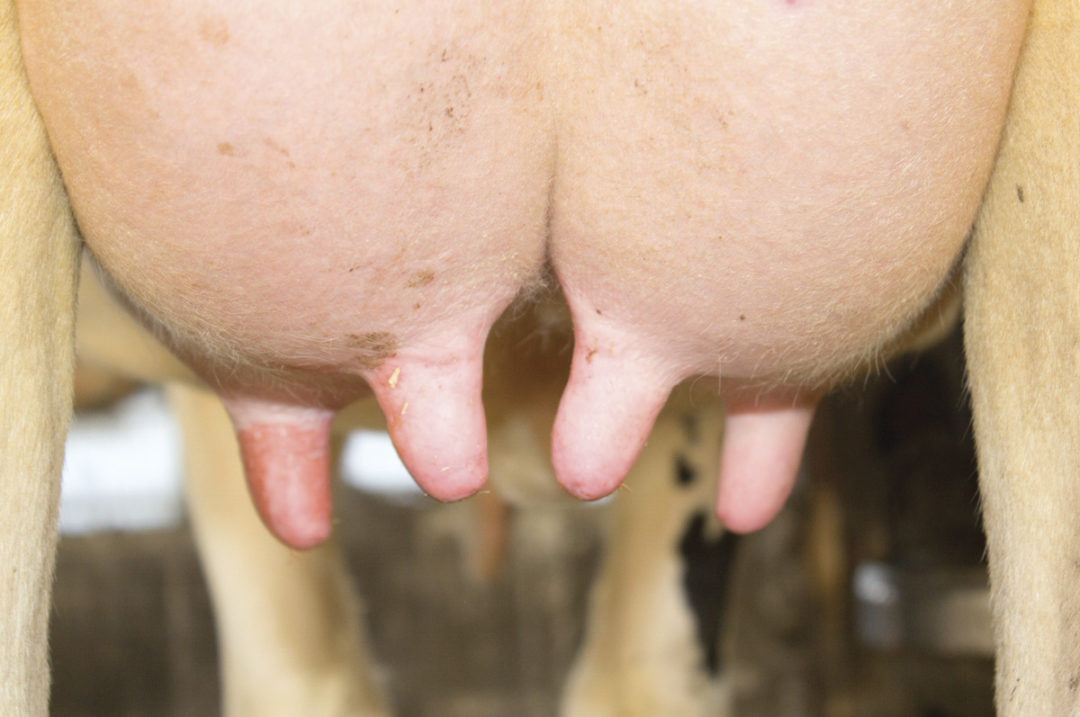Every dairy has a significant focus on nutrition. Each day, huge amounts of time are spent mixing and delivering feed, monitoring dry matter, sampling forages and feeds, ordering ingredients, planning for future crops, etc. The focus is justified since feed and nutrition makes up a majority of daily operating costs as well as the overall cost of operating the dairy farm. It directly affects production levels and component yields. It is important enough that many/most dairies employ at least one professional to oversee and advise on all related areas.
Aside from production, nutrition affects other areas of dairy production. One of these is reproduction. Part of reproductive performance is directly related to the nutritional status of the cow, ensuring she is in a proper body condition and appropriate nutrients are available to support all phases of reproductive function.
One area that may not always be linked as directly as it should be to nutrition is animal health. In many cases, we tend to compartmentalize health and nutrition to a degree, handing the health program to the veterinarian and the nutrition program to the nutritionist. Research and practice has consistently proven a direct link between these two physiological areas, and it is critical for the dairy to recognize the strong connection.
Udder health is highly dependent on the nutrition program
A multitude of scientific evidence exists illustrating the link between nutrition and mastitis in the dairy cow. When nutrition is compromised or even out of balance, the most obvious impact on udder health is through the suppression of the immune system and the subsequent failure of the immune system to respond to pathogenic challenges. The unavailability or deficiency of key nutrients commonly results in immunosuppression.
But this is a multi-stage problem, beginning with access to the udder. The teat opening is the first barrier against invading pathogens (transmitted and environmental). The structural and anatomical attributes of opening and canal (tightness of closure and keratin lining) are designed to prevent pathogen penetration of the udder. Somewhere around 40% of the keratin lining is removed at each milking and, thus, requires constant regeneration to properly function as a “block” to pathogen entrance.
Even with proper teat closing function, pathogens will enter the teat opening. With normal function, after bacteria breach the teat end, a complex immune function process will unfold. One component, the leukocytes, will take up and destroy these invading pathogens. Leukocyte function is a major component of controlling infection by pathogens and a primary defense mechanism. This is only one part of this immune mechanism.
The nutrition and feeding programs should always strive to meet the nutritional requirements of the dairy cow during the various stages of the lactation cycle. During the transition period, the dairy cow can experience negative energy balance, which can have a major impact on the immune response.
Cows in negative energy balance are at a higher risk of ketosis. Clinical ketosis is associated with a two-fold increase in the risk of clinical mastitis, and ketotic cows experience more severe clinical mastitis.
In a review of cows suffering from ketosis and the impairment of udder defense, it has been suggested that cows in a negative energy balance period seem to show an impairment of udder defense (immune response) mechanisms. With an increase in the presence of ketone bodies, several immunocompetence factors are depressed including:
- Capacity for phagocytosis by polymorphonuclear neutrophil (PMN) and macrophages
- Generation of chemo-attractant
- Capacity for blood leukocytes to migrate into the infected milk gland
One study reported that 28.6% of cows with pre-partum ketosis subsequently developed clinical mastitis compared with 8.7% of cows without pre-partum ketosis. Thus we find significant importance in proper energy balance in close-up dry cows and freshening cows. This continues after freshening as long as a potential negative energy balance and incidence of ketosis is a problem.
Other nutrient effects
Trace minerals and vitamins have a significant effect on udder health. Some of the most important include selenium (Se) and vitamin E, copper, zinc, vitamin A and ß-carotene.
Vitamin E and selenium deficiencies leads to impaired PMN activity. Dietary supplementation of cows with selenium and vitamin E improves PMN influx into milk following bacterial challenge and an increase in the intracellular kill of ingested bacteria by PMN. This can help lower the frequency and shorten the duration of clinical mastitis. Vitamin E and selenium are important components of the antioxidant defense of tissues and cells. Cattle consuming stored forages are likely to be low in vitamin E. If un-supplemented, it is common to see vitamin E deficiencies in somewhat older dairy cows.
In many areas selenium content in soils, and subsequently in forages, is low. In these areas or if feeding forage from these areas, selenium supplementation is particularly important. Research has shown that proper selenium and vitamin E supplementation has a significant effect on reducing intermammary infections, somatic cell counts (SCC) and the occurrence of clinical mastitis.
Other immune system components and their production has been shown to be affected by other trace elements. Copper deficiency reduces the number of circulating T cells, B cells and neutrophils. One study showed that supplemental dietary copper reduced the severity of mastitis following experimental challenge of the mammary gland with E. coli. Additionally, it has been shown that under stress conditions (handling, environmental, production), cows have a tendency to excrete more copper and zinc through urine and feces. Thus, stressful periods can increase the incidence of depressed copper and zinc levels in the body, leading to a subsequent reduction in immune response.
Zinc deficiencies are associated with reduced phagocytosis and pathogen killing by macrophages. This may result in a decrease in blood lymphocytes. Several studies have examined the effect of supplemental zinc methionine on SCC, and in most cases, supplementation significantly reduced SCC. Additionally, zinc is required for keratin formation. Cows receiving supplemental zinc (particularly organic forms) had significantly more teat canal keratin.
Organic and hydroxy forms of zinc appear to show better absorption and retention in the animal in a recent study. Related studies have shown more prominent reductions in SCC when zinc was supplemented in part with either organic or hydroxy forms of the trace mineral.
Nutrition and health are a systemic relationship
Aside from the effects on the udder and mammary gland, repeated research over many years has shown a variety of connections to overall nutrition and specific nutrients and how these support the immune system overall as well as specific components. When nutrition is compromised or misbalanced, issues directly related to cow health and the immune system show up as increased mastitis and metritis, and as respiratory, digestive and foot/hoof issues in all levels of the dairy – dry, transition (a problem), lactating cows, calves and developing heifers. Animals struggling with health issues will not perform as well or as efficiently, increasing vet and medication costs. The result is lower production and revenues and greater expenses, as well as cow losses and cull rates.
Because of the interrelationship between nutrition and immunity (health), it is critical for the dairy to demand that the nutritionist and veterinarian cultivate a productive relationship, so the two areas are blended as completely as possible.
Basic, sound, consistent nutrition will promote not only efficient production but will promote reproduction and herd health. While this sounds overtly obvious, maintaining a sound, consistent, properly balanced nutrition program (all nutrients), especially with farm economics as they have been, can be difficult. In many cases, the mineral and vitamin program is the first to be compromised when economics are difficult.
Additionally, numerous additives and products have been identified as having some effect on the health and performance of the animal. These include yeast and yeast cell wall products, various direct-fed microbials, essential oils (plant extracts), mycotoxin binders, enzyme sources, etc. In many cases, the initial effect of feeding additives of this nature is to aid in stress reduction. There are an unlimited number of combinations of products/additives that may work synergistically in the animal to improve health and performance. Many products have been shown to be effective in enhancing immune system function although because of FDA regulation, published claims cannot be made.
Conclusions
Nutrition and animal health are essentially “joined at the hip.” It is always important to maintain a sound feeding and nutrition program to support efficient production. But it is equally important for the nutrition program to focus on the health and well-being of the animal to improve performance, increase longevity in the herd and reduce herd health costs.











